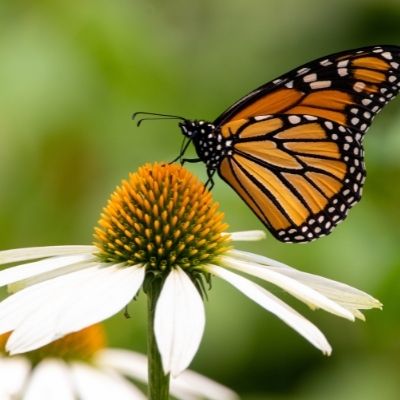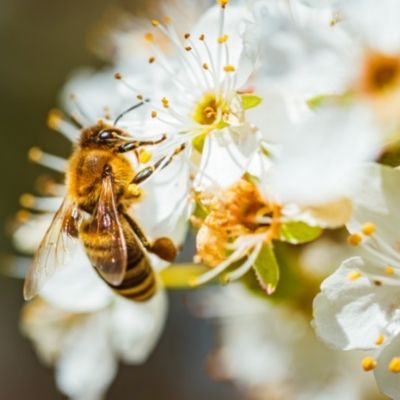How do you make a Bee and Butterfly Friendly Garden?
Planting flowers that attract wildlife should play an important role in our planting decisions. Sustainability is a significant priority in our gardens these days. The sound of bees buzzing around your plants is the soundtrack of a busy and thriving garden, and seeing butterflies fly from flower to flower will cheer up even the most depressed soul. Our gardens are a popular working place for bees and butterflies, throughout spring and summer. This blog we will analyse how to attract such beneficial wildlife and why is important to have them around.
How to Attract butterflies:
Butterflies feed on flower nectar and must eat on a regular basis, consequently it's crucial to have a variety of flowers for them to eat. Because their sight is not very good, they find easier to notice flowers placed in groups. They require water, nectar, and they like being in the warmth of the sun, so leaving a small water pot on the ground near their favourite flowers will allow them to have a drink.
The importance of having a Bee-friendly Garden:
You're not only benefiting your own plants, but you're also saving the globe by making your garden a home for bees. Bees are required to pollinate the plants that provide the foods we enjoy, such as fruits and vegetables. Bees are responsible for providing the orange juice orange you had in the morning or that sweet strawberry you ate on breakfast. Like butterflies, Bees prefer sun over shade and require some protection from strong winds.
Colour is also important to bees, they like blue, purple, yellow, and white. Plant the flowers that feed them near together (ideally in four-foot or larger groups).
How to keep Bees and Butterflies attracted to your garden:
- Pesticides are poisonous to wildlife, so don't use them in your garden. Using organic methods will encourage more beneficial bugs to visit your garden and they will help to eliminate the unwanted bugs.
- Try to Plant Spring flowering bulbs in the autumn and summer flowering bulbs in the spring in your borders or containers. This is a simple and inexpensive approach to have a busy garden from the beginning of the spring until wintertime.
- Plant flowering plants in groups to provide wildlife with an appealing feeding site.
- Let a section of your garden grow wild. Allowing a strip of grass to grow unmowed, overgrown bushes, some dead timber or even a corner of nettles to grow will offer food for the larvae (caterpillars) to grow and thrive. Long grass will provide an excellent habitat for bumblebee nests, while wildflowers such as dandelions, buttercups, and primroses will supply excellent pollinator food.
- Single flowering plants are preferable than double blossoming blooms when it comes to planting. Pollen from a single flower plant is easier for bees to remove than pollen from multiple flower plants.
- Plant native trees that produce blossoms during the winter and early spring months. At times of the year when food is scarce, plants and fruits trees represent a very important supply of food for garden wildlife.
Lenehans Has It:
Buy a large range of Garden Seeds & Bulbs online at Lenehans. From Sunflower seeds to wallflowers and from Sweet pea and Petunia to Vegetable and Garden Herb Seeds. All available for next day delivery.
Check it here.





